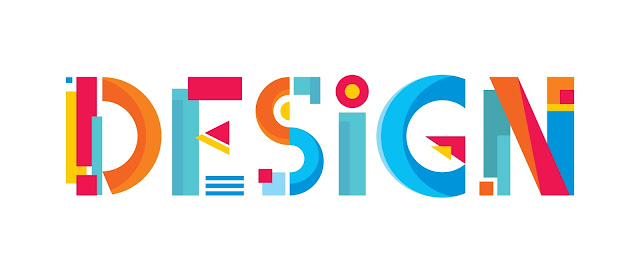
As a graphic designer, you should have an in-depth knowledge of every design process and have a clear vision how to get from the initial point to the desired outcome. However, no matter how much time and resources we allocate to reach the final goal, all our efforts are worthless if we don’t invest them equally in building and maintaining a successful relationship with a client.
Like in any business, there are different types of clients whose expectations and needs may sometimes be overwhelming. A designer might prefer different design niche that doesn’t match client’s vision of the project or the client may be highly demanding and ask the designer to build the castle in the air without having the clear knowledge of the subject matter at the first place. In such a scenario, designers and clients may end up struggling with communication which might cause misunderstanding and, ultimately, end up in a failure.
A good communication will not only help you win the clients’ trust but it will also enable you to develop a long-term relationship that you can rely on when times are tough. It is the key component of being a successful designer. To make sure that relationship with a client runs smoothly, you need to develop a strategy that will help you communicate with a client more effectively.
Here are a few techniques we believe will help you achieve that goal.
Listen to your client’s needs
Whether you are working with a first-time client or a client who has had some experience with projects, you will soon realize that most of don’t have a deep understanding of the very concept of web design. Consequently, they may come to you without a clear view of what they are trying to achieve or they’re simply not so good at clearly laying out the idea.
To ensure that you don’t fall into a trap of miscommunication, you need to be able to put yourself in the shoes of your customer and try to visualize things from his own point of view. Approach your client without having any expectations and assumptions and try to be intuitive enough to understand what your client truly wants.
If you are dealing with a client who communicates poorly, try asking more questions or repeating what your client said. In this way, you will make your client convey his message in a much clearer way which will inevitably have the impact on the final outcome.
Communicate your ideas clearly

Since most clients don’t know the ropes of the entire design process, you can’t expect them to know the professional terms and specialized language design experts are using. Terms like “vector file” or “pixel based” can be confusing to an average client and should, therefore, be avoided.
Instead of diving too deep into a field and getting lost in the sea of specialized words, try using more casual and familiar vocabulary that will make the communication between you and your client much easier and straightforward. What’s more, try picking up some of your client’s business jargon and use it when you think it’s appropriate. Speaking in the language the customer understands will help you bridge any gaps in communication and bring value to your customer.
Practice open communication
Honesty is the best policy. Once you determined all the stages of the project and delegated the roles and responsibilities, it’s time to talk openly about any issues that may arise and the possible outcome. If you think that your client’s idea isn’t standing on the firm ground and that it’s destined to fail, you should let him know. Otherwise, you will spend ample time and resources focusing your efforts on something that will eventually fall flat, and, consequently, put your future client collaboration at risk. As much as it may seem unpleasant, open and honest communication will build trust and help deliver positive results in the long run.
Naturally, openness and honesty only make sense if they are practiced by each side. Encourage your client to speak freely about anything he disagrees with and make him feel an integral part of the project by letting him take part in the decision-making process. Also, let them become an integral part of the project by providing them with a clear view of all the stages of the project by using one of the user-friendly project management tools such as Active Collab.
Create a visual presentation

While a job of a designer involves being creative, looking outside of the box and delivering unique ideas, presenting those ideas to potential clients can be challenging. Verbal communication can sometimes be misleading because the mindset of a creative is completely different from the mindset of a client. Consider the concept your client has in mind and, instead of discussing it with a client, try visualizing it.
For example, discussing formats, colors, visuals and fonts can be much more effective when using pie chart or content remarkable power point presentation. It will help you provide a clear layout of the project’s lifecycle, from the initial stage to the project completion stage with the indication of the end result. Visuals are an excellent way to eliminate the factor of surprise and a useful tool that can help you bring the client communication to a whole new level.
Stick to what you said you were going to do
As much as we try to keep everything under control and everyone in the loop, the course of events is sometimes difficult to predict. Even if you managed to complete your project on time without increasing costs, you still may fail to live up to client’s expectations. He might approach you with a new far-reaching idea which is beyond the scope of the project and which wasn’t initially listed in the contract. In such cases, you can do two things:
- Agree to continue with the project providing that the client is willing to help you out with some more cash
- Refuse to continue with the project as it doesn’t match the initial requirements listed in the contract
Whatever you decide to do, it’s of great importance to be true to yourself, keep the positive attitude and speak openly about the things you disagree with.
Go beyond client’s expectations
Building the client’s trust and loyalty isn’t solely based on a formal contract. If you want to reinforce the client’s loyalty and develop a relationship that will last for years, you need to go an extra mile. Going extra mile comes in many different gestures and acts, and most of them have little to do with your initial contract.
Steve Pfeiffer, a chairman of a leading law firm Fulbright & Jaworski says that leaving your vacation a day earlier to help a client with a critical deadline or helping your client’s children to find and get the right college education has nothing to do with business but with a human side. Once client feels that you are ready to go beyond the formality of the contract and that you don’t expect anything in return, they will appreciate your work and reward you with long-term client loyalty.
At the end of the day, your willingness to connect with client’s interests and meet his needs will help you build a strong relationship based on mutual understanding and trust. Keep in mind that client’s perception of value-added varies depending on the client’s character and the ultimate goals he is trying to achieve. Therefore, you need to have the strong intuition about what your client really needs and the ability to live up to his quality standards. The moment your client perceives that his business has been improved, you will know that you are doing a great job.
Maja Mrsic is a professional content writer and editor at Active Collab. After finishing her Master’s Degree in English studies, she pursued a career in content and technical writing in digital marketing.

